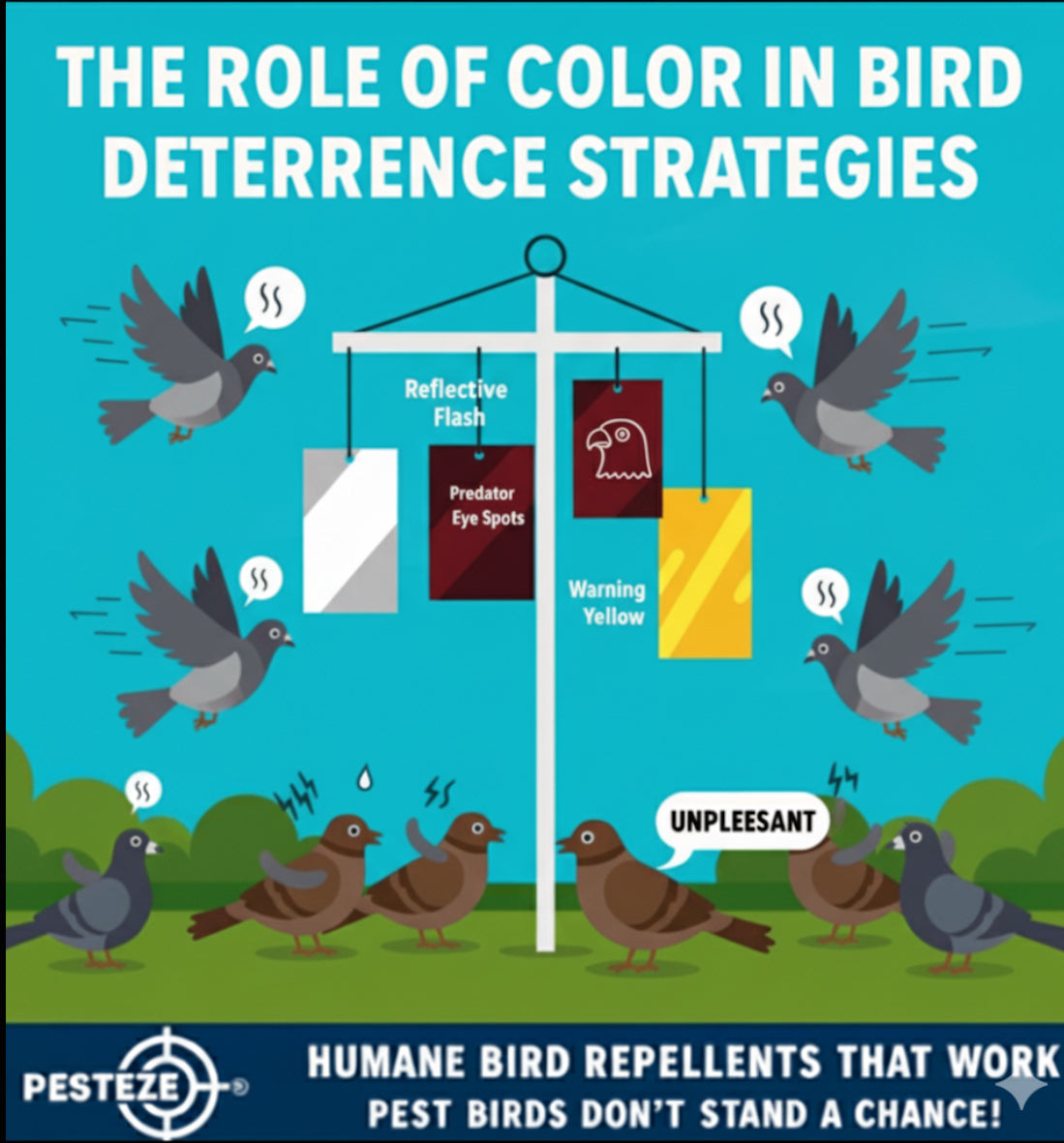THE ROLE OF COLOR IN BIRD DETERRENCE STRATEGIES

THE ROLE OF COLOR IN BIRD DETERRENCE STRATEGIES
SUMMARY
Color plays a significant role in influencing bird behavior and can be an effective component of bird deterrence strategies. Birds are highly visual creatures, sensitive to certain colors and contrasts that signal danger or discomfort. By using color strategically, property managers and homeowners can discourage birds from perching, roosting, or nesting, reducing damage and sanitation issues.
FEATURES
-
Visual Impact: Colors can startle or deter birds from unwanted areas.
-
Reflective Surfaces: Bright and reflective colors catch light and create movement that scares birds.
-
Contrast Usage: High contrast patterns can mimic predator presence.
-
Humane Deterrence: Color-based methods avoid physical harm to birds.
-
Versatile Application: Effective on buildings, rooftops, ledges, gardens, and patios.
-
Cost-Effective: Inexpensive yet efficient addition to existing deterrent strategies.
-
Eco-Friendly: Works without chemicals or traps.
-
Long-Term Effectiveness: When combined with rotation or movement, maintains bird avoidance.
GUIDE DESCRIPTION
Birds perceive color differently than humans, often seeing a broader spectrum and noticing contrasts more keenly. Bright, reflective colors and patterns can trigger avoidance behavior because they mimic movement, light flashes, or predator warning signals. Items such as shiny tape, reflective disks, holographic bird scare strips, or colorful decoys can all exploit this sensitivity.
Color deterrents are most effective when combined with movement or other sensory cues. Birds may eventually become accustomed to static visual signals, so rotating colors, moving decoys, or pairing reflective surfaces with auditory deterrents increases long-term effectiveness.
This approach is particularly valuable in urban environments, gardens, balconies, and rooftops where humane methods are preferred over chemical repellents or trapping. By understanding and leveraging bird vision, property managers can implement safe, cost-effective, and environmentally responsible strategies to keep birds away.
- Smrithi Art


Comments 0